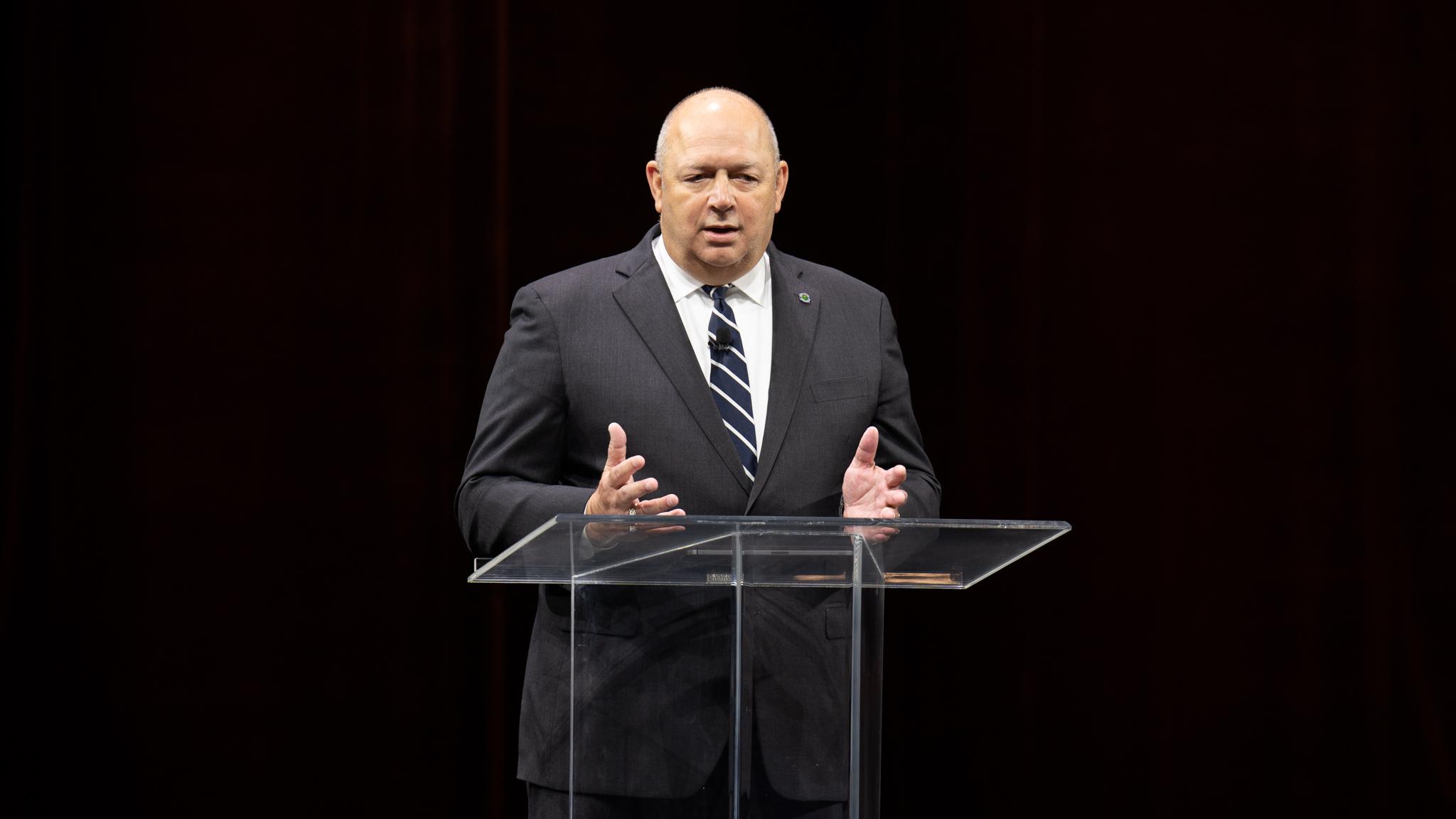
Breaking down barriers to innovation was a theme of the NBAA-BACE opening-day keynote addresses on Oct. 12.
NBAA bestowed its Meritorious Service to Aviation award to Martine Rothblatt, a pilot and technology entrepreneur who cofounded the company that became SiriusXM radio, then founded biotechnology company United Therapeutics to develop a cure for pulmonary arterial hypertension after her daughter was diagnosed with the condition.
Rothblatt’s more recent pursuits include supporting multiple advanced air mobility vehicle developers, including Beta Technologies, of Burlington, Vermont. United Therapeutics plans to use Beta’s Alia-250 electric vertical-takeoff-and-landing aircraft to deliver organs for transplant patients.
“Move technology forward by questioning assumed truths,” Rothblatt advised the audience.
Also giving keynote addresses were Teddy Tzanetos, who led the team at NASA’s Jet Propulsion Laboratory that developed the Mars Ingenuity helicopter, and FAA Administrator Steve Dickson.
On April 19, 2021, the Ingenuity rotorcraft drone achieved the first powered, controlled flight by an aircraft on another planet, hovering 3 m (10 ft.) above the surface of Mars for 39 sec. “That moment was the Martian Wright brothers’ event,” said Tzanetos. “That was the culmination of the entire Ingenuity Mars helicopter team across multiple NASA centers and several companies to prove for humanity that yeah, we can fly on Mars.”

Dickson advised that the FAA must strike a balance between innovation and safety. “There’s a certain tension between rapid change and innovation and a safe, stable, predictable aviation system,” he said. “We have to be able to reconcile that tension. Our task as a regulator, and also as an operator—because we run the air traffic control system—[is to] nurture that innovation, allow it to develop and thrive while at the same time to provide an aerospace system that is safe and efficient and, very importantly, has the trust of the public.”
Dickson added: “Think of our rules and processes as a protective envelope. The answer is to make sure that envelope is the right size.”
